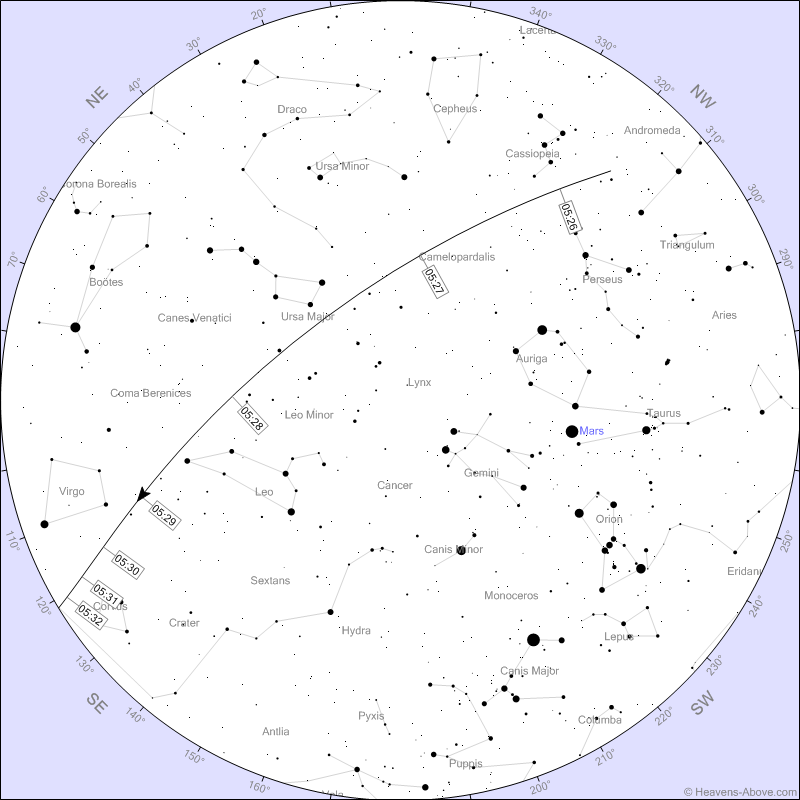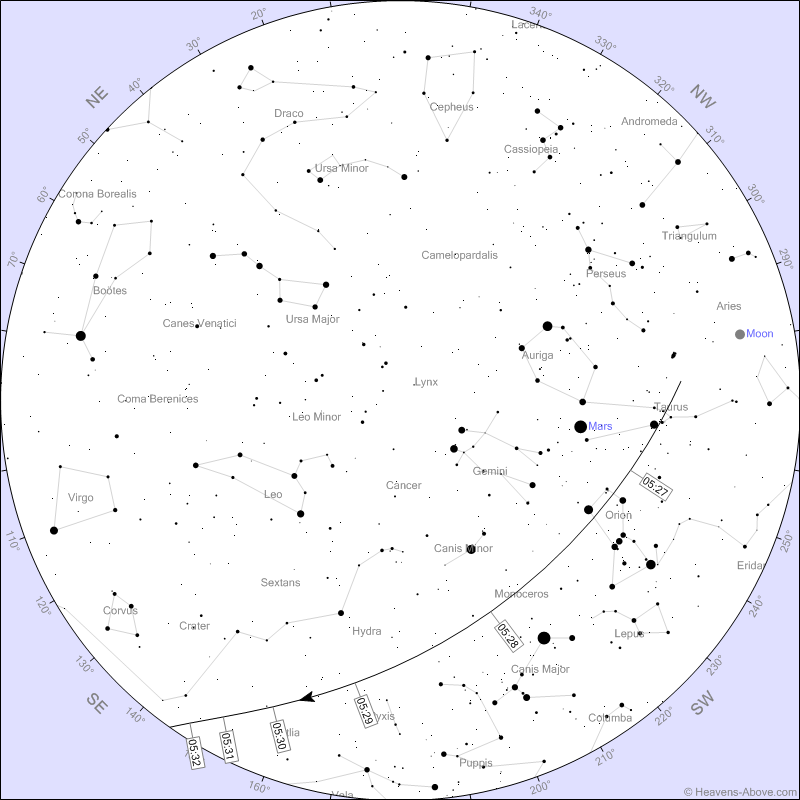Image credit: NASA/Roscosmos
The International Space Station (ISS) is making several bright passes over the Delaware Valley in the pre-dawn skies throughout the week of November 6. Below we highlight the three best opportunities to #SpotTheStation this week.
The space station orbits Earth at an average altitude of 248 miles and circles the globe every 90 minutes. It is visible from 95% of the inhabited land on Earth but is not visible from extreme northern or southern latitudes.
November 6 - 5:25 am
The brightest of passes starts on Sunday morning, November 6. The ISS will appear in the Northwest at about 5:25 am, passing high overhead toward the Southeast before setting at 5:32 am. The ISS will first appear near the constellation Cassiopeia, the queen, before reaching Ursa Major (the Big Dipper) and Leo, the lion before setting near the bright star Spica at 5:32 am.
At its brightest, the station will appear brighter than Jupiter, at magnitude -3.5. Brightness is measured on a reverse logarithmic scale. The brighter the object is, the lower its magnitude number. For example, the Sun is magnitude -27, the full moon is -13, and Mercury's average brightness is 0.23. The average naked eye limit is magnitude 6.5.

Details:
| Event | Time | Brightness |
| Rises | 05:25:21 | -2.3 |
| Maximum Altitude | 05:27:28 | -3.5 |
| Sets | 05:32:53 | 1.5 |
November 7 - 4:39 am
The next pass will begin at 4:39 am on Monday, November 7. The ISS will appear in the handle of the Big Dipper (Ursa Major), passing by Leo at 4:41 and setting quickly at 4:44 am.
At its brightest, the station will be brighter than Jupiter at magnitude -2.6.

Details:
| Event | Time | Brightness |
| Rises | 04:39:23 | -2.6 |
| Sets | 04:44:32 | 1.4 |
November 8 - 3:53 am
If you plan to be out watching the lunar eclipse in the early morning hours of November 8, you'll have two opportunities to watch the ISS fly past. The first pass will be a challenge, with the ISS appearing near Leo before quickly setting 2 minutes later in the East.
At its brightest, the station will be as bright as Saturn at a magnitude of -0.5.

Details:
| Event | Time | Brightness |
| Rises | 03:53:28 | -0.3 |
| Maximum Altitude | 03:53:46 | -0.1 |
| Sets | 05:56:01 | 1.1 |
November 8 - 5:26 am
The last of the passes will begin at 5:26 am on Tuesday, November 8, about 30 minutes before the moon reaches maximum eclipse. The ISS will emerge from Earth's shadow in the West halfway between the Moon and Mars. It will pass just below the red supergiant star Aldebaran in Taurus, the bull, followed by Betelgeuse in Orion, the hunter as it moves across to the Southeast before setting at 5:32 am.
At its brightest, the station will be brighter than Jupiter at magnitude -3.2.

Details:
| Event | Time | Brightness |
| Rises | 05:26:24 | -2.9 |
| Maximum Altitude | 05:27:41 | -3.2 |
| Sets | 05:32:59 | 0.8 |